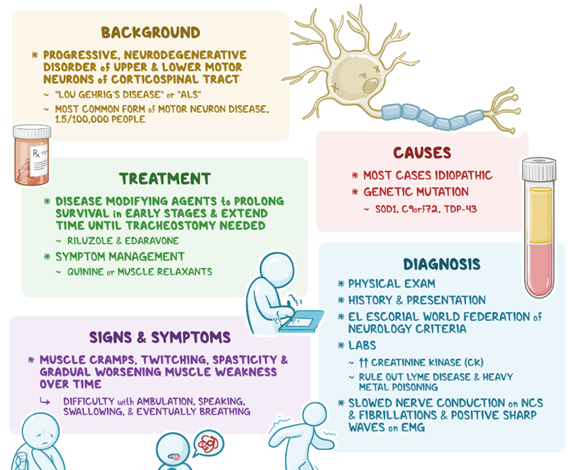A nurse is caring for a client in the emergency department who has a preliminary diagnosis of a transient ischemic attack (TIA). Which of the following diagnostic testing should the nurse anticipate the provider to prescribe?
Computerized tomography angiography (CTA)
Complete blood count (CBC)
Prothrombin time (PT)
Transesophageal echocardiogram (TEE)
The Correct Answer is A
A.Computerized tomography angiography (CTA)
This is a likely diagnostic test that the provider may prescribe. CTA uses computed tomography (CT) imaging to visualize the blood vessels in the brain and neck. It can help identify areas of stenosis, occlusion, or other abnormalities in the blood vessels that may contribute to the TIA symptoms.
B. Complete blood count (CBC)
A complete blood count (CBC) is a routine laboratory test that assesses various components of blood, such as red blood cells, white blood cells, and platelets. While it may not be specific to diagnosing a transient ischemic attack (TIA), it can help evaluate for underlying conditions such as anemia or thrombocytosis that could contribute to TIA symptoms or increase the risk of stroke.
C. Prothrombin time (PT)
Prothrombin time (PT) is a laboratory test that evaluates the clotting ability of blood and is typically used to monitor anticoagulant therapy. While abnormal coagulation parameters may be associated with certain conditions that predispose to TIA (such as atrial fibrillation), PT alone is not a specific diagnostic test for TIA.
D. Transesophageal echocardiogram (TEE)
This is another possible diagnostic test that the provider may prescribe. TEE is a specialized echocardiogram that provides detailed images of the heart structures by inserting an ultrasound probe
Nursing Test Bank
Naxlex Comprehensive Predictor Exams
Related Questions
Correct Answer is B
Explanation
A. Intellectual capacity is not affected:
This statement refers to the fact that ALS primarily affects motor neurons, leading to muscle weakness and paralysis, but it typically does not directly impact cognitive function or intellectual capacity. While cognitive impairment is not a hallmark feature of ALS, some individuals may experience changes in cognitive function or behavior, such as executive dysfunction or frontotemporal dementia, in later stages of the disease. However, depression in ALS is not primarily linked to changes in intellectual capacity but rather to other factors such as altered communication, physical limitations, and loss of autonomy.
B. Communication is altered:
ALS can affect the muscles involved in speech and swallowing, leading to difficulties in communicationAs the disease progresses, patients may experience dysarthria (difficulty speaking clearly) and dysphagia (difficulty swallowing), which can impair their ability to communicate effectively with others. Altered communication can result in frustration, social isolation, and feelings of being misunderstood, all of which are risk factors for depression.
C. Mobility is limited:
ALS causes progressive muscle weakness and paralysis, which can significantly impair mobility over time. As the disease advances, individuals with ALS may become increasingly dependent on mobility aids such as wheelchairs or may require assistance with mobility tasks. Limited mobility can lead to feelings of loss of independence, decreased participation in activities, and increased dependence on caregivers, all of which can contribute to depression.
D. Nutritional intake is poor:
ALS can affect the muscles involved in swallowing and chewing, leading to difficulties with eating and drinking. Dysphagia, or difficulty swallowing, is a common symptom in ALS and can result in poor nutritional intake and weight loss. Malnutrition and weight loss are associated with increased morbidity and mortality in ALS, and they can also contribute to feelings of weakness, fatigue, and overall decline in quality of life, which may exacerbate depression.

Correct Answer is C
Explanation
A. Hyperglycemia:
Hyperglycemia refers to high blood sugar levels. While certain medications can affect glucose metabolism and potentially lead to hyperglycemia as a side effect, this is not typically associated with hydantoin therapy for seizure disorder. Therefore, it is less likely for the patient to experience hyperglycemia as a direct result of taking hydantoin medication.
B. Hunger:
Hunger is not a common side effect of hydantoin therapy for seizure disorder. While some medications may affect appetite or cause changes in eating habits, hunger is not a typical side effect of hydantoin medications such as phenytoin.
C. Hypoglycemia:
Hypoglycemia refers to low blood sugar levels, which can lead to symptoms such as confusion, dizziness, sweating, and weakness. Hydantoin medications, particularly phenytoin, can affect glucose metabolism and increase the risk of hypoglycemia, especially in patients who already have diabetes or are prone to low blood sugar. Therefore, it is important for patients taking hydantoin therapy to monitor their blood sugar levels regularly and be aware of the signs and symptoms of hypoglycemia.
D. Pupil dilation:
Pupil dilation, or mydriasis, is not a common side effect of hydantoin therapy for seizure disorder. While certain medications may affect pupil size, this is not typically associated with hydantoin medications such as phenytoin.
Whether you are a student looking to ace your exams or a practicing nurse seeking to enhance your expertise , our nursing education contents will empower you with the confidence and competence to make a difference in the lives of patients and become a respected leader in the healthcare field.
Visit Naxlex, invest in your future and unlock endless possibilities with our unparalleled nursing education contents today
Report Wrong Answer on the Current Question
Do you disagree with the answer? If yes, what is your expected answer? Explain.
Kindly be descriptive with the issue you are facing.
